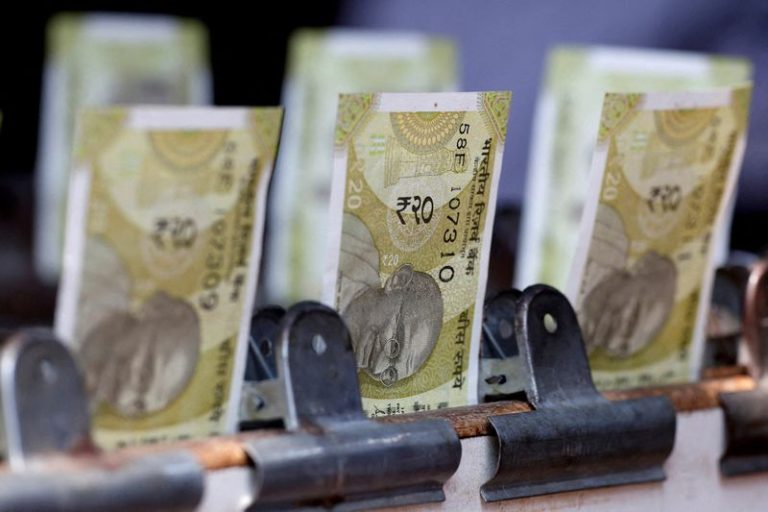By Nimesh Vora
NEW DELHI (Reuters) – The Reserve Bank of India (NS:BOI) on Friday raised the interest rate ceiling that banks can offer for foreign currency non-resident (FCNR-B) deposits to boost forex inflows at a time when the currency has been regularly hitting all-time lows.
A FCNR-B is a term deposit account that non-resident Indians (NRIs) can open with banks in a foreign currency. Since the account is maintained in a foreign currency, the depositor is not exposed to exchange rate risk, making it attractive for NRIs.
The central bank has used this route in times of pressure on the rupee including in July 2013, when the currency came under attack due to the country’s weak macroeconomic fundamentals.
Most recently, the RBI announced similar easing in July 2022.
Banks will now be permitted to raise fresh FCRN-B deposits ranging between maturity of 1 year and less than 3 years at rates not exceeding the relevant reference rate plus 400 basis points, RBI governor Shaktikanta Das said in his monetary policy statement.
Deposits with maturity between 3 and 5 years can be offered at rates not exceeding the reference rate plus 500 bps.
For both the maturities, this is 200 bps higher than what they can currently offer.
The decision would have been taken “weighing the cost of heavy FX intervention in the past two months”, Madhavi Arora, lead economist at Emkay Global, said.
The central bank is estimated to have sold $35-40 billion in the spot and the forward segments of the forex markets over these two months, while building up an estimated $60 billion in short dollar/rupee positions in the non-deliverable forwards market amidst foreign portfolio outflows from India, Arora said.
The rupee has been facing pressure on multiple fronts, with concerns over incoming U.S. President Donald Trump’s tariff policies, portfolio outflows, weakness in Asian peers and slowing growth undermining the Indian currency.
The rupee dropped to a lifetime low of 84.7575 to the U.S. dollar on Tuesday. It was last quoting at 84.6200.
Mandar Pitale, head of treasury at SBM Bank India, does not see the RBI measure helping the rupee much.
“Don’t think there will be significant accretion of FX deposits as a result of this measure, he said.
“It may benefit banks who already have organic demand for such deposits but others can raise funds more cheaply in the local market so they are unlikely to exercise the raised ceiling.”

